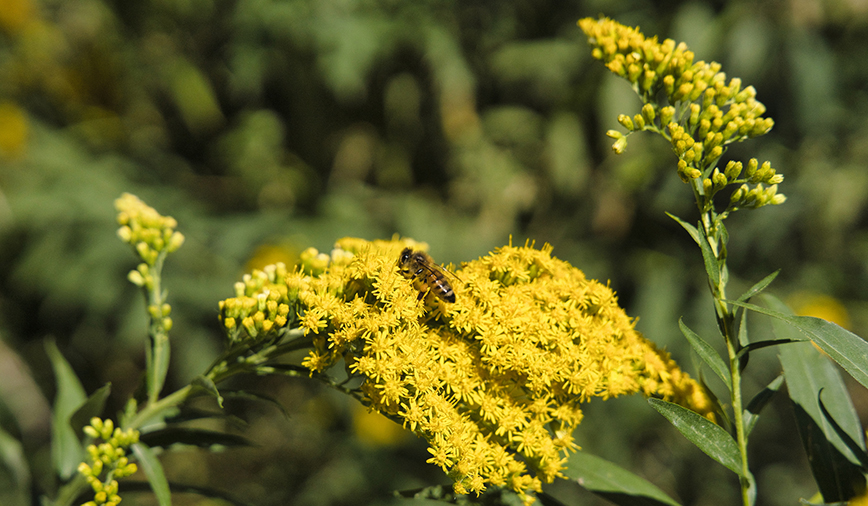It’s a fact of life when living in and around nature. Sooner or later you’re going to ask, or be asked, “What’s that smell?”
The question, by itself, is fairly innocuous. But rarely are those words uttered alone. More often than not, they are accompanied by an interjection of one sort or another that provides, shall we say, context?
Example A: “Mmm! What’s that smell?” Possible answers here might be the subtle, sweet scent of basswood flowers, or the pungent, herbal essence of crushed bee balm.
Example B: “Eww! What the…? Answers here run a wide gamut, from skunk to snake to decomposing organic matter.
And, as we learned this past week, honey.
Yep, rich, sweet, healthful honey. That wonderful gift from Apis mellifera, the honey bee. Its distinctive aroma varies widely, depending on the bees’ predominant source of nectar.
Clover honey and orange blossom honey are two commercially available varieties that have instantly recognizable scents. In our area, honey bees produce honeys made from the nectars of many local wildflowers. Dependent on growing conditions, the flavors vary with the season and year.
Here at Hickory Knolls we are fortunate to be able to watch honey in the making each and every day. Through a generous grant from the St. Charles Kiwanis club, and the know-how of local beekeeper Chris Saad of Honey Trails in Wayne, we have an observation bee hive in our exhibit room.
All day, every day, hundreds of worker bees fly in and out, through a little “bee highway” tube that connects the hive to the outdoors, and visit the wildflowers that grow in our natural area.
All spring, as the trees blossomed and the woodland wildflowers bloomed, all was well. All summer, as the milkweeds, coneflowers and roses sparkled in the sun, the hive smelled just dandy.
But then, a few short weeks ago, the atmosphere around the hive changed abruptly. Instead of the aroma of bees and nectar—the subtle sweetness we’d grown accustomed to—the air space around the base acquired a distinctly different character. In the space of a few short days, it had gone from “Mmm!” to “Eww!”
Some of the more generous folk around here described the smell as strong, possibly moldy, cheese. Others less charitable said it smelled like stinky socks or a locker room. And one person actually thought something had died there in the hive.
More than a little curious, and somewhat fearful that we’d done something wrong, I shot an email off to Chris, asking him whether there was something we, or he, needed to do.
His response? “Pam! You’re cracking me up!”
He went on to explain the strange smell emanating from the hive is the distinctive aroma of goldenrod nectar curing into honey. Nectars from another group of fall-flowering plants, the asters, can also contribute to the funk.
Organic compounds in asters and goldenrods—both members of the very large family Asteraceae—are what create the strong smells. And while the scent is very prevalent while the nectar is curing, the finished honey tastes nothing like moldy cheese, or stinky socks, or dead stuff. It’s unique, for sure, but undeniably sweet.
I’m told the smell won’t last forever. As the bees fan the nectar and the excess moisture evaporates away, the liquid will thicken into honey. The bees will then seal it away behind a layer of beeswax, which won’t be opened until the bees need it—probably sometime this winter.
All of this means that time is running out. If you like the smell of stinky socks or, more likely, you’re curious about nature and want to gain one more nugget of knowledge, come out to Hickory Knolls and give our bee hive a sniff. Goldenrod nectar is one natural aroma you won’t soon forget.
Pam Erickson Otto is the manager of nature programs and interpretive services at the Hickory Knolls Discovery Center, a facility of the St. Charles Park District. She can be reached at 630-513-4346 or potto@stcparks.org.
October 2, 2015
Goldenrod and Honey
Honey bees collect nectar and pollen all spring and summer long, and the aroma around their hive is undeniably sweet. But when goldenrod gets added to the mix, things change in a hurry.

